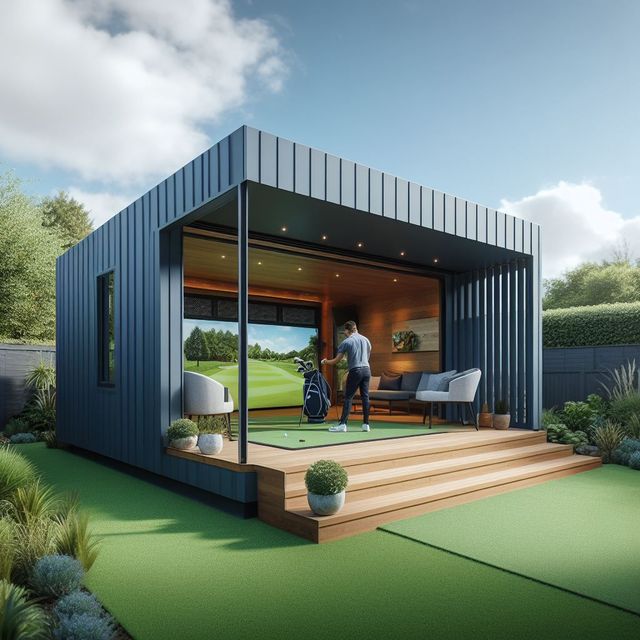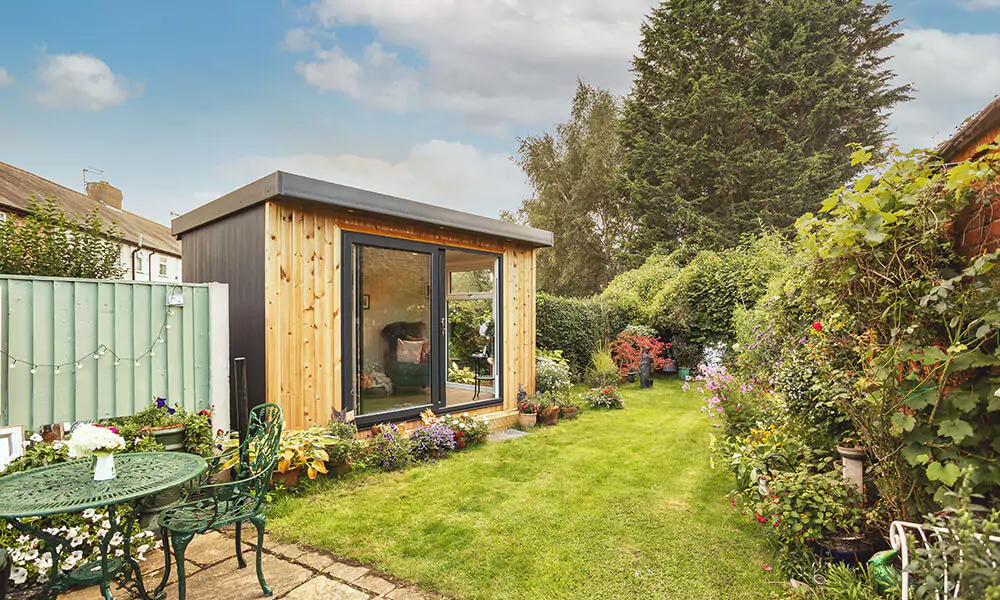Excellent Info For Planning Permission For Garden Sheds
Wiki Article
What Are The Limits On Size For Gardens?
Certain size limitations are typically used to determine whether you need planning approval when creating gardens, conservatories, or outhouses. Here is a list of typical size requirements that could force you to request planning permission.
For detached outbuildings, planning permission is usually required in the event that the area of the outbuildings proposed, plus any other structures already in place, exceeds half the area of land that surrounds the house (excluding the footprint of the the house).
Height Restrictions
Single-story construction: Maximum eaves height is not to exceed 2.5 meters. The total roof's height should not be more than 4 meters in the event of two-pitched pitches or 3 meters if it does not.
If the building is within 2 meters of the boundary of a property the height must not be more than 2.5 meters.
Floor Area:
The building code might be required for structures that are that are larger than 30 square meters, even though planning permission isn't required.
Proximity to boundaries
If the structure exceeds 2.5 meters in height and is located within 2 meters of a boundary then the building permit will be required.
Building Usage:
While the size of the gardens isn't the only factor but their purpose can affect whether planning approval is required. For instance, if a building is to be used for residential accommodation or as a commercial space Planning permission will be more likely to be required.
Permitted Development Rights:
Permitted Development Rights are subject to certain size limitations and conditions. These rights differ depending on if a property is located within an area of protection or is subject to other limitations.
Conservatories and Extensions:
The maximum depth for a one-story rear extension typically is 4 meters for detached houses, and 3 meters for semi-detached or terraced homes. It can be raised to 8 meters for detached homes and by 6 feet for semi detached or terraced homes, based on the specifics.
The height limit for a rear extension with a single story is 4 metres.
Side Extensions
For side extensions the width cannot be greater than half the size of the home's width The height cannot exceed 4 meters.
Volume Restrictions
In certain regions (like conservation zones or Areas of Outstanding Natural Beauty), any additional building that increases the volume of the original house by more than 10 percent or 50 cubic meters (whichever is greater) could require planning permission.
Front Extensions
Planning permission is normally required for extensions that go beyond the original house's frontage with the road.
It is advisable to consult the local planning authority before confirming the rules as they could differ based on the local authority and the specific conditions of your home. In addition, even when planning permission isn't needed, building regulations approval might be required to ensure structural integrity and safety reasons. Have a look at the best how big can a garden room be without planning permission for site recommendations including outhouse uk, best heater for log cabin, Tring garden rooms, outhouse uk, composite garden rooms, garden rooms brookmans park, armoured cable for garden room, garden office, copyright garden room, conservatories and garden rooms and more.
![]()
What Planning Permissions Are You Required To Get To Build Garden Rooms, Etc. Terms Of Height Restrictions?
When constructing conservatories, garden rooms, outhouses, gardens offices or extensions, specific height restrictions determine whether permits for planning are required. These are the main requirements for height that you must know:
The maximum height permitted for an outbuilding that is not attached (or extension) that has a dual-pitched roofing system (such as the Gable roof) is 4 meters.
Other types of roof (flat or single-pitched) cannot exceed 3 meters in height. In the case of any other type (flat, single pitched, etc. ) the height maximum should not be more than three meters.
Proximity of boundaries:
The maximum height of a structure that is less than 2 meters from the boundary must not be greater than 2.5 meters. This is the case for garden rooms, sheds and similar outbuildings.
Eaves Height
The maximum eaves height (the length from the roof's bottom of the roof) cannot exceed 2.5 meters for any structure.
Conservatories and Extensions:
The height of rear extensions that have one-story must not exceed four meters. The height of the roof and any parapet walls are included.
Side Extensions
Side extensions are limited to a height of four meters. They are not allowed to be higher than the house that was originally built.
Special Roofs
Structures with a roof which is flat are limited to a max 3 m in height.
Additional limitations in specific zones:
In areas of Outstanding Natural Beauty conservation areas, as well as other zones that are designated, there might be stricter height restrictions and approval for planning required for structures which would normally fall under permitted development rights.
Constructions in National Parks
National Parks can have height restrictions similar to those in designated areas. Planning permission is necessary.
Roof Design
Take into consideration the height of your roof, excluding any chimneys, antennas or chimneys. The height of the roof should be taken into consideration. If the highest point is greater than the permitted limits for development Planning permission will be needed.
Neighbours are also affected
Even if you're within the height limit, a planning permit may still be needed to build an structure if it has impacted on the privacy, view or sunlight of neighbouring properties.
Maximum Total Height
The total height of any structure shouldn't exceed 4 meters. For instance, the highest point of a garden office with an incline roof that is dual pitched should not be more than 4 meters.
Decking or Platforms:
The decking and platforms that are associated with the structure need to not raise the level of the ground by more than 0.3 meters in order to not require permission for planning.
Checking with your local authorities to find out about the latest changes or regulations is always a good idea. Even if a project falls within the general allowed rights of development, local variations or special property conditions could require permission to plan. Take a look at the recommended kitchen garden room extension for website info including copyright garden room, outhouse builders, garden rooms, outhouses for garden, outhouses for garden, copyright outhouse, copyright garden office, outhouses, gym outhouse, outhouse for garden and more.

What Planning Permission Do You Need To Build Garden Rooms, Etc. Terms Of Location Restrictions?
Planning permission may be required for conservatories, garden rooms and outhouses. These are the most important aspects to be considered when determining the location The proximity of boundaries
Within 2 meters of your property border, any structure should not be higher than 2.5 meters. If the height is higher than the limit, planning permission is required.
Front of Property:
The development rights granted by the permit do not usually allow for extensions or forward-facing buildings.
Right-hand side of property:
If the extension extends past the current wall, it is likely to require permission for planning.
Rear of the property
Size and height limitations apply to rear extensions, including gardens. Planning permission is required if the extensions exceed permitted growth boundaries.
Designated Zones
In the areas of outstanding natural beauty (AONB), National Parks and World Heritage Sites there are more strict controls. Planning permission may be required for any new construction, no matter how large.
The listed buildings:
Properties that are listed as a building has strict guidelines. No matter where the structure is located on your property, you will require permission for planning as well as approved building permits for any modifications or extensions.
Green Belt Land:
The green belt is protected through strict rules on building to maintain open space. Permissions are usually required to construct a new structure or significant alteration.
Flood-prone Zones
Additional regulations may apply if the property in question is located in an area that is susceptible to flooding. These are designed to keep the building of a building from causing more flooding. Planning permission and possibly a flood risk assessment could be required.
Urban vs. rural environments:
Urban and rural areas are often subject to different rules. Rural properties, for example are likely to have more flexible limitations on the location and size of outbuildings. However, this could differ greatly.
Highways, Public Rights of Way and Public Rights of Way
Planning permission might be required when the structure is located in close proximity to highways, public rights-of way, or roads to ensure that it does not hinder safety, views, or access.
Shared Ownership and Leasehold Land
If the property is being rented or a part of a shared ownership scheme, it may require additional permissions. Planning permission may be required based on local regulations.
Nearby to Other Structures
The new structure may need approval for planning to prevent negative impacts on the neighboring property or structures.
To obtain advice on your particular property's conditions and location, you'll need to talk to your local planning authority. Local laws can have an impact on the rules. It is essential to follow all regulations to avoid legal or financial penalties. Take a look at the top main electric supply cable size for website info including garden outhouses, what size garden room without planning permission uk, outhouse garden rooms, garden rooms, insulated garden buildings, what size garden room without planning permission, garden office hertfordshire, garden room planning permission, herts garden rooms, copyright garden office and more.
